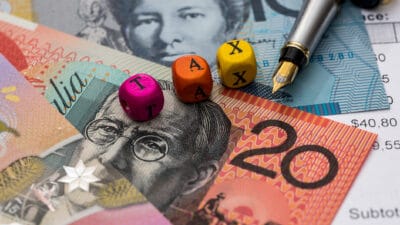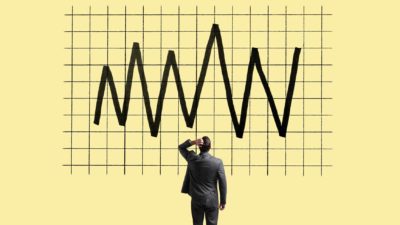The last 18 months have probably been the strangest in my time as an investor — professional or amateur.
I mean obviously, in a real-world sense: we're living through a once-in-a-century pandemic, with lockdown restrictions we've never had before.
The health consequences are awful (but could have been so much worse without fast action from medicos, governments and virologists: thanks science!).
The economic consequences are terrible for many — some businesses have failed, some won't re-open, some workers have lost their jobs and many are struggling to put food on the table.
And the strange circumstances of that economic impact has meant an unusual set of economic outcomes — some are out of work, as I mentioned, while others find themselves flush with cash, thanks to ongoing work and fewer ways to spend their income.
(But kudos to the governments, State and Federal, who threw ideology out the window and just did what needed to be done on that score. The responses were imperfect, but the circumstances required 'big, fast and ugly', not 'incremental, slow and perfect'.)
And frankly, the investing implications are a small consideration in that context. Perspective is important.
Still, that's what I'm here for, so I'll share some thoughts.
I've lived through a few recessions. A few stock market crashes. The '87 crash was the first I remember. And at high school and university, we were taught about Communism, the Berlin Wall, 1980s stagflation and the Wages Accord.
(Don't worry, kids, there won't be a test. Just believe me when I tell you these things were real and — for a time, at least — important to learn about.)
While the causes and implications of each downturn have tended to be different, the commonality tended to be the cyclical nature of the market and the economy — growth eventually led to excess, which led to a crash, then a slow recovery and back to growth, then excess… and so on and so on.
This time was obviously different.
This was a (very appropriately) government-engineered recession, as a consequence of public health policy. It was sudden and it was sharp (Australian GDP had the largest quarterly fall in recorded history).
It also had unprecedented government support, in the form of stimulus programs: business payments, welfare boosts and more which totalled well over $100 billion.
There was — is — a second version, a year later, as Delta threatened to ravage the country.
The textbooks don't include such events. Or such responses.
Fast, sharp falls. Fast recoveries. 10-figure government support packages. Sharp differences between the economic winners and losers.
And there's no precedent for investors, either.
How do we judge business success in this environment? How do we work out the right price to pay for a given company's shares?
Well, I reckon every company is going to fit into one of five (very) broad categories, when considering the recent past and the likely future:
1. No change in business during the pandemic, and no likely change from here (probably the smallest group)
2. A big slump, followed by a return to pre-pandemic 'old normal'
3. A big slump, with no meaningful recovery, as the company fails to adapt to the 'new normal'
4. A big jump, followed by a return to pre-pandemic 'old normal'
5. A big jump, with no meaningful fall, as the company benefits from 'the new normal'
The first group might be energy retailers, for example. But not much else.
The second lot could be toll roads or airports.
The third might be second or third tier retail or office property, if we change our buying and working habits.
The fourth might be makers of facemasks or other PPE. Or supermarkets.
Our last group could be online retail (pure play or those with decent online businesses as part of an omnichannel strategy).
Of course, those examples are both arbitrary, and 'best guesses'.
The guesswork is complicated by two things — one evergreen and one that is specific to this pandemic.
The evergreen complication, which bears stating, even if it's obvious, is that we can't know the future. No-one, this time two years ago, could have predicted what the following 24 months would bring.
The other challenge, though, is that it's incredibly hard to unpick the sales and profit results of the last year and a half to work out which company belongs in which category.
Let's take retail.
We know that there was a trend towards shopping online before we all learned the term COVID-19.
We know that trend was given an almighty kick-along when the pandemic struck. It boosted sales of some retailers and the combination of poor online offerings and government-mandated closures meaningfully hurt others.
But how much of each is pandemic-related? How much is the extension of a trend already underway?
How much of the last 18 months' worth of sales will happily go back to physical retail once we can, again, shop unfettered? How much will have been the creation of new habits that will see us continue to shop online, even after the restrictions are lifted?
And it's not going to be entirely one or the other.
What is the true underlying sales growth of Temple & Webster? What is the true underlying sales loss for Mosaic Brands?
And from what sustainable base are they starting?
Those aren't just academic questions.
Temple & Webster sales grew 85% to $326 million in the last financial year. Operating profit increased by 140% to $20m.
That we know.
But how much of those sales and profits are one-off?
How much of that growth is temporary?
It's entirely possible that sales go backwards this year. The same with profits.
Both metrics could still be well up on 2019, just not at the stellar levels of last year.
Or, they could continue to climb, now that shoppers have discovered the business, are more comfortable shopping online, and word of mouth does its thing.
The problem is that those two scenarios are potentially miles apart, especially if those growth rates continue at different levels for a long time.
And that makes valuation particularly challenging.
A business with $20m in operating profit growing at 40% per annum for 10 years will make a lot more money than another one that drops to, say $15m and then grows at 8% per annum.
(And there are many potential outcomes between those two examples.)
Which is both a problem… and an opportunity.
In more normal times, you can reasonably look at the past couple of years for most businesses and extrapolate a pretty decent range of potential outcomes.
This time around… not so much.
But that probably means there are some real bargains (and some overpriced dross) out there.
That's good news for those of us who are prepared to think (and dig) a little deeper.
(For what it's worth, I think the market is undervaluing online retail, overvaluing commercial office space, underappreciating software businesses and paying too much for supermarkets.)









